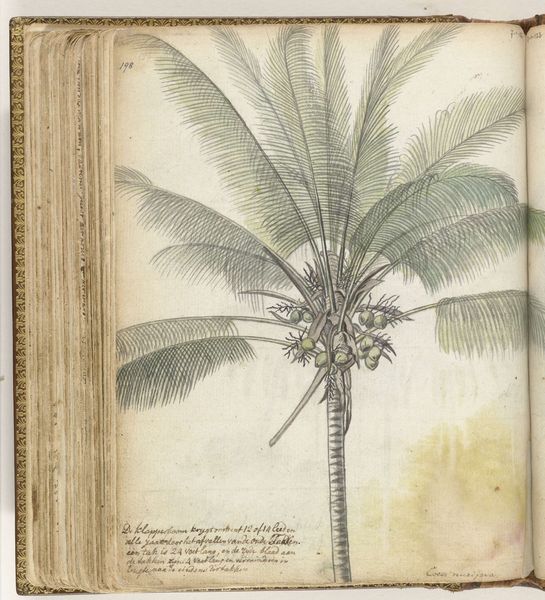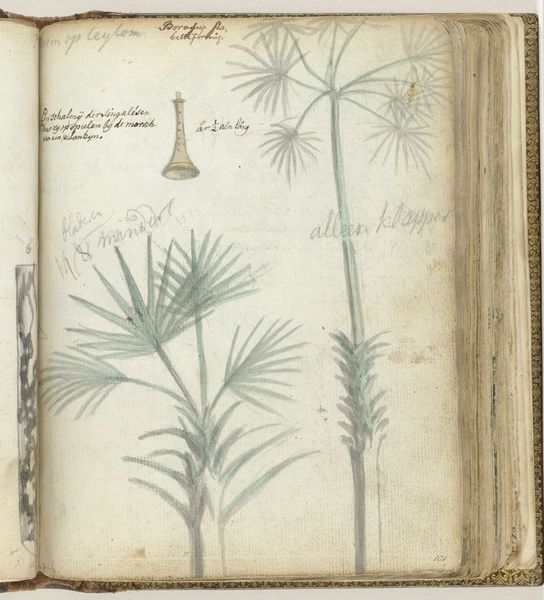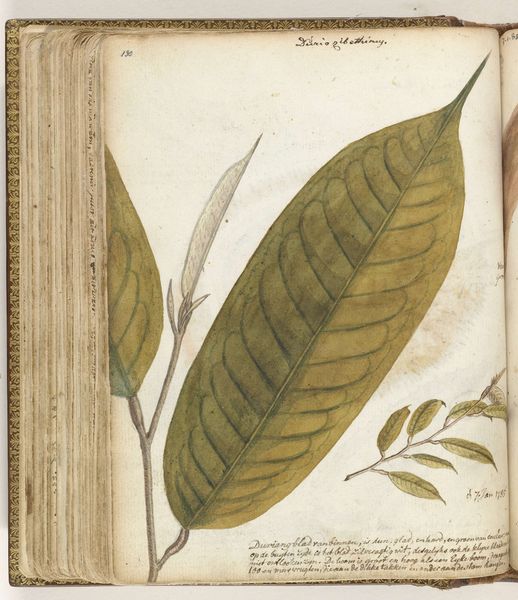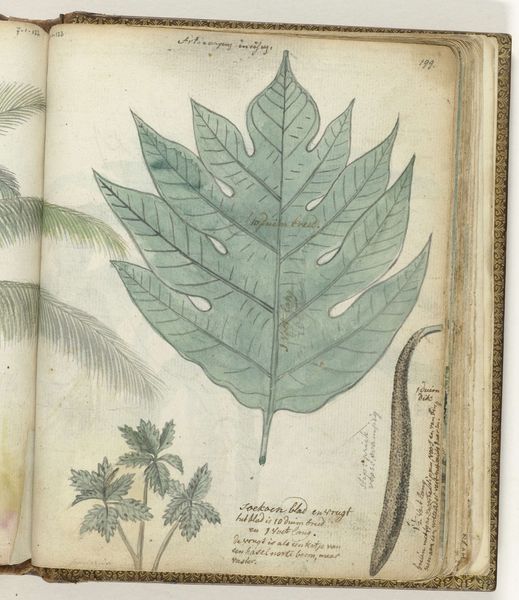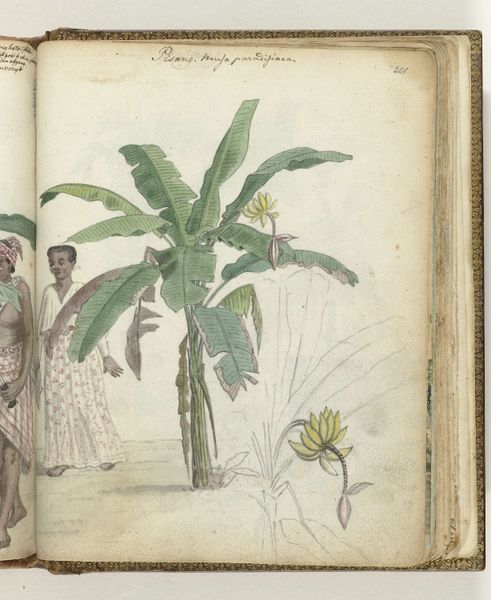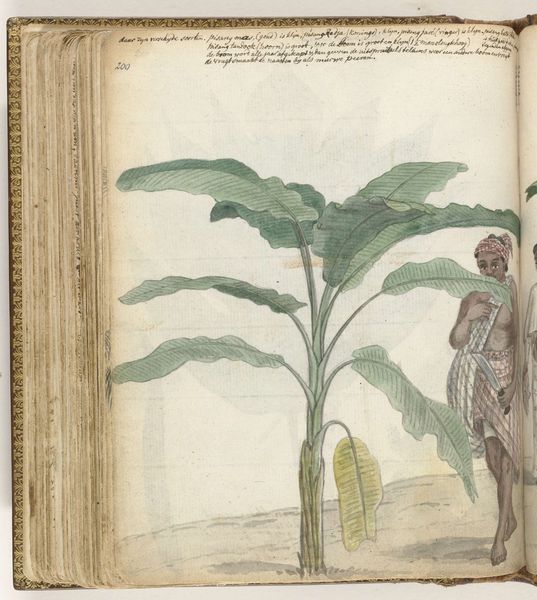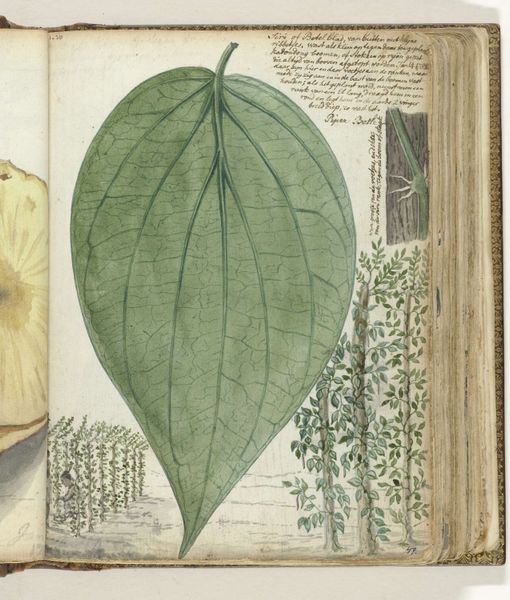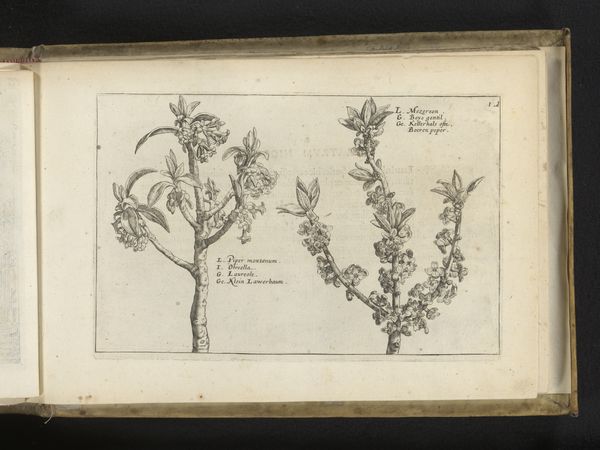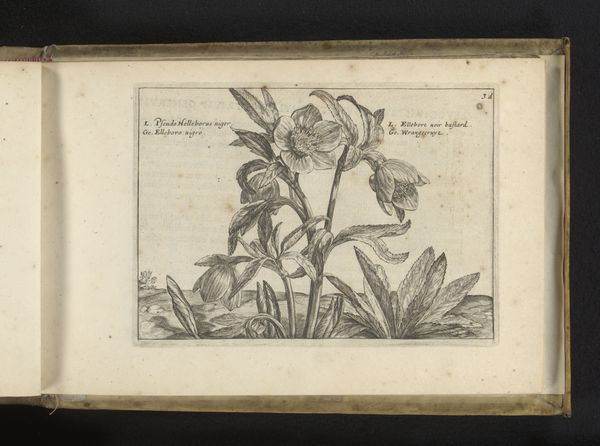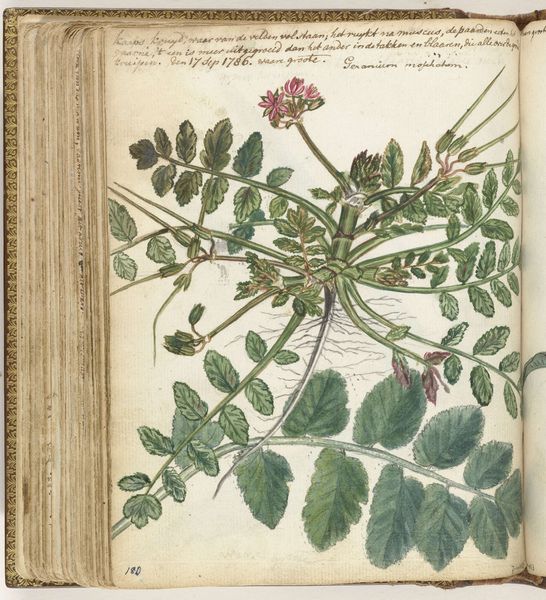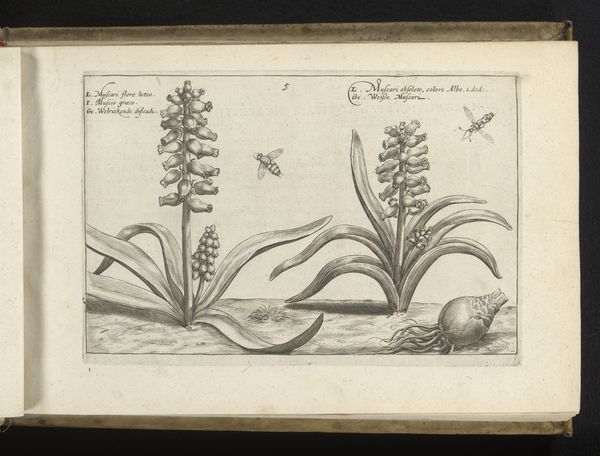
Dimensions: height 195 mm, width 155 mm
Copyright: Rijks Museum: Open Domain
Editor: Here we have Jan Brandes' "Pinangboom," a watercolor and colored pencil drawing possibly from 1785-1786. It depicts a palm tree, fairly detailed, against the backdrop of what seems to be a travel journal. It feels almost clinical in its precision, like a botanical study. What story does this botanical illustration tell you? Curator: More than just botanical accuracy, this image exists within a complex colonial context. Brandes, working for the Dutch East India Company, documented the natural world, framing it through a European lens. The "Pinangboom" becomes more than just a palm; it’s a resource to be cataloged, potentially exploited. How does the inscription at the bottom of the page, likely Brandes' handwriting, influence your interpretation? Editor: Now that you point it out, the handwritten notes do make it feel like a commodity inventory. I hadn't initially considered that the clinical feel may have been for practical reasons. But it still feels removed from nature, and the human experience in viewing it. Curator: Exactly. Brandes isn't simply appreciating the tree; he is placing it within a system of knowledge and power. We should question whose perspectives are privileged here. What might a local artist's depiction of the same tree have looked like? How would they emphasize the tree's cultural significance? Or resist this objective classification? Editor: So, seeing the artwork through a colonial lens gives it a completely new layer of meaning. It isn't just a pretty plant, but an indication of how Europeans may have regarded and recorded new resources. Curator: Precisely. By acknowledging this, we can critically examine the role art played in colonial projects and begin to consider alternative narratives and perspectives. We learn how historical biases shape even seemingly objective scientific illustrations. Editor: I'll definitely think of seemingly benign historical nature images in a different way now. There's more than meets the eye!
Comments
No comments
Be the first to comment and join the conversation on the ultimate creative platform.
